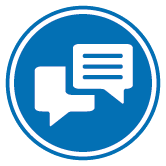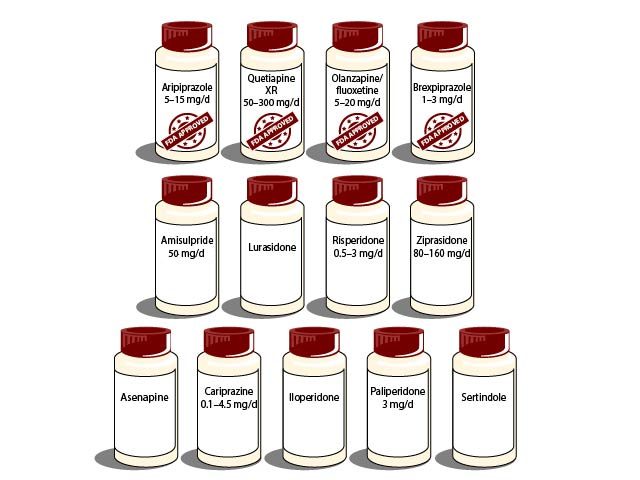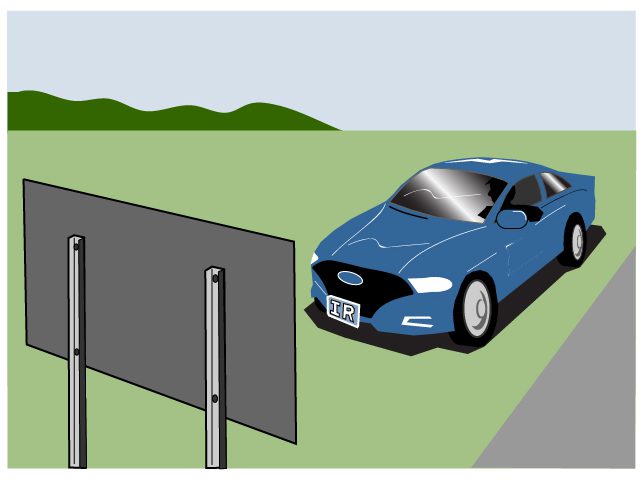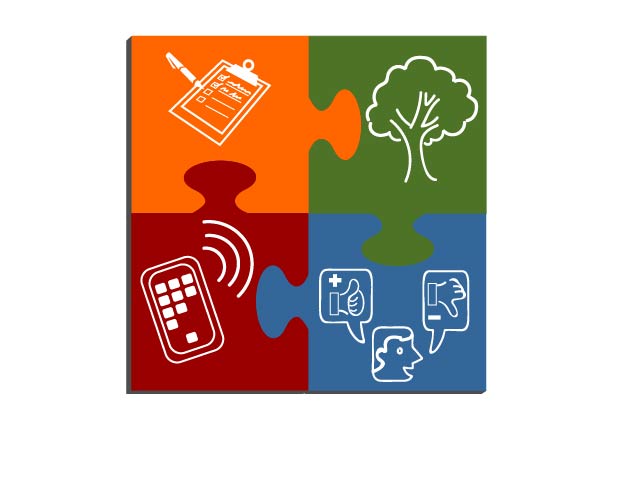Abstract
When a patient with major depressive disorder experiences inadequate response to an antidepressant, clinicians should employ measurement-based care strategies to improve outcomes. Evidence suggests that adjunctive therapies, such as the FDA-approved atypical antipsychotics, are efficacious when the initial treatment is well tolerated but not improving symptoms. Clinicians should consult guidelines, peer-reviewed journals, CME programs, and other sources to stay up-to-date with current and emerging treatments in this area. They should also be familiar with the available options for psychotherapy, neurostimulation, supplements, and exercise for patients who prefer alternative therapies.
This activity is the fourth of four included in the series “Inadequate Response to Antidepressant Treatment in Major Depressive Disorder”:
- Recognizing Inadequate Response in Patients With Major Depressive Disorder
- Implementing Measurement-Based Care to Determine and Treat Inadequate Response
- Inadequate Response to Treatment in Major Depressive Disorder: Augmentation and Adjunctive Strategies
Financial support was provided by Otsuka Pharmaceutical Development & Commercialization, Inc., and Lundbeck, Inc.
Massachusetts General Hospital Clinical Trials Network and Institute, Boston, Massachusetts (Dr Papakostas); Departments of Psychiatry and Family Medicine, University of Tennessee College of Medicine, Memphis, Tennessee (Dr Jackson); Department of Psychiatry, Northwestern University, Feinberg School of Medicine, Chicago, Illinois (Dr Rafeyan); and University of Texas Southwestern Medical Center, Dallas, Texas (Dr Trivedi)
Financial disclosure
Dr Papakostas has been a consultant for AlphaSigma, Cala Health, Alkermes, Johnson & Johnson, and Otsuka and has received honoraria from Acadia, AlphaSigma, Alkermes, and Hypera S.A. Dr Jackson has been a consultant and speakers/advisory board member for and received honoraria from Allergan, Genentech, Otsuka, and Sunovion. Dr Rafeyan has received grant/research support from Eli Lilly, Sepracor, and Janssen and has been a speakers/advisory board member for AstraZeneca, Allergan, Alkermes, Eli Lilly, Janssen, Intra Cellular Therapies, Pfizer, Abbott, Otsuka, Lundbeck, Takeda, Teva, and Sunovion. Dr Trivedi has been a consultant or advisory board member for Allergan, Alto Neuroscience, Applied Clinical Intelligence, Axsome Therapeutics, Boehringer Ingelheim, Engage Health Media, GreenLight VitalSign6, Janssen, Lundbeck Research USA, Navitor, Otsuka, Perception Neuroscience, Pharmerit International, SAGE Therapeutics, and Signant Health; has received grant/research support from the National Institute of Mental Health, National Institute on Drug Abuse, Patient-Centered Outcomes Research Institute, and Cancer Prevention Research Institute of Texas; and has received editorial compensation from the American Psychiatric Association (Deputy Editor, American Journal of Psychiatry) and Oxford University Press.
This eReport is derived from the expert roundtable meeting “Inadequate Response to Antidepressant Treatment in Major Depressive Disorder,” which was held October 5, 2019.
This evidence-based peer-reviewed eReport was prepared by Healthcare Global Village, Inc. Financial support for preparation and dissemination of this eReport was provided by Otsuka Pharmaceutical Development & Commercialization, Inc., and Lundbeck, Inc., for educational purposes. The faculty acknowledges Evonne Krell for editorial assistance in developing the eReport. The opinions expressed herein are those of the faculty and do not necessarily reflect the views of Healthcare Global Village, Inc., the publisher, or the commercial supporters.
To cite: Papakostas GI, Jackson WC, Rafeyan R, et al. Overcoming challenges to treat inadequate response in major depressive disorder. J Clin Psychiatry. 2020;81(3):OT19037BR4.
To share: https://doi.org/10.4088/JCP.OT19037BR4
Meet the faculty
Introduction
At a roundtable meeting, an expert panel discussed how to determine where patients with major depressive disorder (MDD) are on the response continuum and how to treat inadequate response. Their discussion is interspersed throughout this activity, which focuses on overcoming challenges in the treatment of patients with inadequate response to antidepressants.
Many patients treated for MDD experience relatively modest rates of response and remission despite the large number of antidepressant medications available.1 Side effects can hinder treatment adherence, while residual symptoms can contribute to increased functional impairment, increased subjective suffering, and increased morbidity and mortality.1 Clinicians should feel a sense of urgency to help patients with partial or no response to initial treatment, especially since people with MDD have reduced life expectancy compared to those without MDD (AV 1).2
AV 1. Impact of Depression on Quality-Adjusted Life Expectancy and Life Expectancy
Data from Jia et al.2
Definitions of Response and Remission
The panel defined nonresponders as patients who show little to no improvement in depressive symptoms, typically less than 25% improvement on a depression rating scale.1 Partial responders, or patients with inadequate response, show some improvement in symptoms, between 25% and 49% on a rating scale, but still have troublesome symptoms that negatively impact their functioning.1 Responders are patients who have 50% improvement or more, but still have not achieved remission and often require treatment for residual symptoms.1 Patients who achieve remission, often defined as a set point on a rating scale, such as ≤7 on the Hamilton Depression Rating Scale (HDRS) or <5 on the 9-item Patient Health Questionnaire (PHQ-9), are virtually symptom-free and able to return to normal functioning.
Patients with treatment-resistant depression (TRD) are characterized by a much longer treatment history during the current episode, such as 2 or more treatment trial failures, and often exhibit a sense of discouragement.
 Patient Perspectives
Patient Perspectives
In an interview conducted by the Depression and Bipolar Support Alliance (oral communication, December 2019), one patient articulated this feeling of hopelessness:
“We have to put me on another [medication]? What does this mean? Why is this so bad? Why can’t I get out of this myself? Is this a forever thing?”
For more on definitions relating to response, see the eReport in this series titled “Recognizing Inadequate Response in Patients With Major Depressive Disorder.”
New Treatments
Dr Papakostas noted that in the last 5 years, the number of depression treatments with novel mechanisms being either approved or studied has increased.3 However, new treatments present both an opportunity and a challenge because for clinicians to use them effectively, they need to understand their risks, benefits, tolerability, and safety, all of which require clinicians to stay current with the available treatments. In addition, clinicians must find ways to incorporate measurement-based care (MBC) strategies to improve their diagnostic and assessment abilities for patients with MDD.
Measurement-Based Care
MBC involves the systematic administration of symptom rating scales and uses the results to drive clinical decision making for individual patients. For details on MBC in MDD treatment, see the eReport “Implementing Measurement-Based Care to Determine and Treat Inadequate Response.” Although MBC has proven more effective than usual care in helping patients achieve both response and remission, it has not been adopted as standard practice. Barriers to implementing MBC include perceived time constraints, establishing rapport with patients, and lack of formal training.4
Dr Jackson agreed that time constraints are a challenge in primary care, but when clinicians try using rating scales, they typically see how the scales save time by helping them focus on symptoms indicated by screeners that were completed before the visit.
References: Kroenke et al,5 Unützer and Park.6
Abbreviation: EHR = electronic health record.
Patient Communication
Nonadherence to treatment is another challenge for patients with MDD, with up to 20% showing poor adherence.7 Using assessment tools to track depressive symptoms cannot only guide treatment decisions but also educate patients about their illness as they see what is being monitored. Conversely, not performing MBC uncouples patients from their own understanding of the symptoms of depression and the direction in which they are moving. When patients see which of their symptoms have changed and which have not, they will understand the need to optimize their dose, begin an adjunctive therapy, or switch medications. This understanding can improve treatment adherence.
Roueen Rafeyan, MD, DFAPA, FASAM, noted that he often encounters patients who are unsure what to expect from treatment.
 Patient Perspectives
Patient Perspectives
One patient described her expectations for antidepressant treatment:
“I was told that it was supposed to make me . . . feel better about myself…take the depression away, make me feel happy, make me want to get back to my routine of being more social with people, not being isolated…Getting my day together, but not feel like I’m being slowed down. Just your normal routine, but at the pace [you] don’t feel like you’re lagging.”
When Dr Rafeyan reviews patients’ symptoms and shows them their score on a rating scale, such as the HDRS, it helps them understand which symptoms have improved and which still need to get better so that they can return to their normal functioning.
Dr Jackson added that MBC provides an important avenue for communication with patients, especially topics that may be sensitive to discuss. Patients may be more honest answering questions on paper or a screen than face-to-face with a clinician, so assessment tools can help overcome stigma related to mental illness, suicidality, or self-harm. Scales and screeners are valuable for clinicians not only because they help them know when to adjust treatment, but also as a supplement to understanding patients’ feelings and concerns.
Treatment Options
Dr Papakostas noted a broadening in recent years of the types of treatments available for MDD. Traditional antidepressant monotherapies are often used sequentially, but the Sequenced Treatment Alternatives to Relieve Depression (STAR*D) study showed that monotherapy outcomes for more than 2 subsequent trials are diminished.8,9 Per the American Psychiatric Association (APA) guidelines, adjunctive treatment strategies for partial responders and nonresponders include atypical antipsychotics, lithium, and thyroid hormone.10 Data suggest that partial response is not a prerequisite to using augmentation, and augmentation has been shown to be quite effective even in the absence of meaningful response to antidepressant monotherapy.11,12 For patients with TRD, those who have had nonresponse to 2 consecutive therapies, treatments also include electroconvulsive therapy (ECT) and ketamine or esketamine.13–15
Atypical Antipsychotics
The atypical antipsychotics aripiprazole, quetiapine XR, and brexpiprazole are the only US Food and Drug Administration (FDA)-approved treatments for augmentation in MDD. Although the atypical antipsychotics were developed 10 years ago, they may be underutilized, with many clinicians more likely to switch agents than to augment.16 Dr Rafeyan explained that clinicians may think they need to get a partial response before adding an adjunctive therapy, such as an atypical antipsychotic, as mentioned previously. Studies show that adjunctive antipsychotics are significantly more effective than placebo for response and remission, even with no response to initial antidepressant.11,12 However, as with all treatments, clinicians must monitor side effects.17 Dr Rafeyan noted that barriers to using these medications may include stigma against the class of medications (antipsychotic used for depression) and concern about side effects (while perhaps forgetting the consequences of symptoms of depression). A paradigm shift must occur in the way clinicians think regarding sequential antidepressant monotherapy trials versus adjunctive therapies.
For a review of FDA-approved and off-label treatments used adjunctively in MDD, see the eReport “Inadequate Response to Treatment in Major Depressive Disorder: Augmentation and Adjunctive Strategies.”
Video 2. Dr Jackson Reviews Adjunctive Therapies Used and Underused in Primary Care
References: Papakostas et al,18 Shelton et al.19
Other Adjunctive Strategies
Other adjunctive strategies include l-methylfolate and S-adenosylmethionine, 2 natural compounds involved in the 1-carbon cycle metabolic pathway. Both supplements appear to be efficacious and well tolerated in reducing depressive symptoms, including in patients with little or no response to antidepressant treatment.20,21
Aerobic exercise can also be prescribed for patients with inadequate response. The Treatment with Exercise Augmentation for Depression study22 showed remission rates of 15.5% for lower-dose and 28.3% for higher-dose exercise augmentation in patients with MDD who were nonresponsive to selective serotonin reuptake inhibitor treatment (N=122). With the exercise dose tailored to the individual, depressed patients can complete a structured exercise program with behavioral support and improve symptoms.
Clinicians should also keep cognitive-behavioral therapy (CBT) as well as neurostimulation techniques such as transcranial magnetic stimulation (TMS) in mind for patients with inadequate response. The APA guidelines10 recommend the use of medication, psychotherapy, or a combination of psychotherapy and medication as initial treatment strategies. For patients with MDD and symptoms of anxiety, CBT can be an effective tool, as can mindfulness-based therapy.23,24
Video 3. Dr Rafeyan Answers Questions About the Benefits of Psychotherapies for Patients With Inadequate Response
References: Gelenberg et al,10 Coffey et al,23 Strauss et al.24
The challenge for the clinician is figuring out which of these available treatments to use based on their patients’ response to current and past therapies, symptom severity, and preference.
Care Coordination and Follow-Up
Dr Jackson suggested that more information on novel therapies (eg, neurostimulation, esketamine) and how they fit into the big picture of available treatments for patients with MDD would be helpful for clinicians. While the novel therapies are interesting, he believes the biggest transformation in care comes when clinicians improve patients’ treatment adherence and choose treatments and strategies that are evidence-based.
Dr Trivedi added that in addition to improving metric-based care, education on care coordination would help keep patients engaged because patients with partial response or TRD tend to cycle in and out of care due to hopelessness or discouragement over treatment failures. Dr Rafeyan agreed that better patient follow-up, such as weekly phone calls, can keep them more involved in treatment. Clinicians may also need to be more aggressive in addressing symptoms earlier rather than waiting months for response to several sequential antidepressant trials.
Current Guidelines
The APA guidelines25 offer several recommendations for treating partial response and nonresponse to both antidepressant therapy and psychotherapy. In the initial weeks of treatment, they recommend assessing adherence, increasing medication dosage (if well tolerated) or intensity of psychotherapy, or considering ECT if symptoms are severe or life-threatening. At 4–8 weeks if patients are experiencing inadequate response to antidepressant treatment, clinicians may consider increasing the dose, switching to a different antidepressant, changing to or augmenting with psychotherapy, or adding adjunctive therapy or ECT. For inadequate response to psychotherapy, clinicians may change the intensity or type of psychotherapy and add or switch to medication. While these strategies are helpful for a big-picture view of treatment options, they do not capture the differences between inadequate response and TRD or take into account novel treatments that have become available since the guidelines were published in 2010.
CANMAT Guidelines
The Canadian Network for Mood and Anxiety Treatments (CANMAT) guidelines,7 which were updated in 2016, recommend the following strategies for patients who have not shown improvement after 2–4 weeks of treatment: reevaluating the diagnosis, optimizing the antidepressant dose, addressing adherence, and considering switching antidepressants or adjunctive therapies, including psychotherapy and neurostimulation. The guidelines note that the value of switching between and within antidepressant class remains controversial and suggest switching to another treatment with evidence of superior efficacy. Atypical antipsychotics are listed as the first-line adjunctive medications recommended for partial response to antidepressant treatment.
Use of Guidelines and Other Sources
When clinicians are considering adjunctive treatments for patients with inadequate response, they may consult guidelines such as those by APA or CANMAT, continuing medical education (CME) activities, peer-reviewed journals, or experts, as well as incorporate their own clinical judgment (AV 2).7,10
AV 2. What Guidelines Do You Follow When You Consider Adjunctive Treatment for Patients With Major Depressive Disorder Having an Inadequate Response to Their Antidepressant?
Data expressed as percentages of respondents.
After seeing the poll results, Dr Rafeyan noted that the high percentage of respondents who did not use guidelines for adjunctive therapy appear to be consulting peer-reviewed articles and CME programs, which highlights the impact of education to inform practice. If educational programs emphasize current evidence on the treatment of inadequate response, that can help clinicians select appropriate treatments. Because guidelines are consulted by many clinicians, it would be helpful if they were updated more frequently.
CME Programs
Dr Jackson added that clinicians do need the complete picture for treating MDD, and guidelines tend to provide that versus the typical CME talk that focuses on one intervention. The advantage of CME programs in which experts discuss the current literature is that they can occur more often than guidelines can be updated, which can be every 5 to 10 years.
Madhukar H. Trivedi, MD, who has been involved in the review and development of guidelines, said guidelines can provide a good synthesis of the evidence of the literature, but they do not have the same level of detail as treatment algorithms. If clinicians aren’t using guidelines, they are hopefully keeping up with the literature through peer-reviewed journals and CME programs.
Conclusion
Clinicians face many challenges in the treatment of patients with MDD who experience inadequate response to antidepressants, but MBC strategies can improve outcomes through the use of regular assessment, patient education, and decision points. The antidepressant treatment options are more varied than ever, requiring clinicians to consult guidelines, peer-reviewed journals, CME programs, and other sources to keep up with the evidence for new and emerging treatments. Evidence suggests that adjunctive therapies, such as the FDA-approved atypical antipsychotics, are efficacious when the initial treatment is well tolerated but not improving symptoms. Clinicians should also be familiar with the available options for psychotherapy, neurostimulation, supplements, and exercise for patients who prefer alternative therapies.
 Case Practice Question
Case Practice Question
Julia is a 43-year-old married woman. She was referred for treatment-resistant MDD by her primary care clinician. Specifically, the onset of her current major depressive episode was 1 year ago, and this is her first lifetime episode. Aside from hypertension, Julia has no other notable history of comorbid medical or psychiatric illness. Her first treatment was escitalopram, maximum dose of 30 mg for 16 weeks, with no results. Escitalopram was then augmented with cognitive-behavioral therapy, coupled with a concurrent switch to vortioxetine (maximum dose of 20 mg for 12 weeks). Again, no efficacy or adverse events were noted. During your evaluation, you note sadness and apathy that have been progressively worsening over time. Which next-step treatment is best supported by the evidence?
a. Augment with an FDA-approved atypical antipsychotic agent.
b. Switch to escitalopram.
c. Increase the vortioxetine dose.
d. Switch to venlafaxine.
 Discussion of the Case Practice Question
Discussion of the Case Practice Question
Preferred response: A. Augment with an FDA-approved atypical antipsychotic agent.
Explanation: Atypical antipsychotic agents have been shown to be efficacious and are FDA-approved specifically for this patient population.7,27 Yet another switch (to either escitalopram or venlafaxine) after 2 antidepressant failures is not supported by data from STAR*D.9 After attaining the maximum FDA-approved dose28 for vortioxetine with no improvement, increasing the dose yet again ranks lower than augmentation as an evidence-based approach.
 Clinical Points
Clinical Points
- Regularly assess symptoms as part of measurement-based care.
- Stay caught up on current treatments for inadequate response, including adjunctive atypical antipsychotics, novel agents, supplements, and exercise.
© Copyright 2020 Physicians Postgraduate Press, Inc.
References (28)

- Papakostas GI. Identifying patients who require a change in depression treatment and implementing that change. J Clin Psychiatry. 2016;77(suppl 1):16–21. PubMed CrossRef
- Jia H, Zack MM, Thompson WW, et al. Impact of depression on quality-adjusted life expectancy (QALE) directly as well as indirectly through suicide. Soc Psychiatry Psychiatr Epidemiol. 2015;50(6):939–949. PubMed CrossRef
- Ionescu DF, Papakostas GI. Experimental medication treatment approaches for depression. Transl Psychiatry. 2017;7(3):e1068. PubMed CrossRef
- Aboraya A, Nasrallah HA. It’s time to implement measurement-based care in psychiatric practice. Curr Psychiatr. 2019;18(6):6–8.
- Kroenke K, Spitzer RL, Williams JBW. The PHQ-9: validity of a brief depression severity measure. J Gen Intern Med. 2001;16(9):606–613. PubMed CrossRef
- Unützer J, Park M. Strategies to improve the management of depression in primary care. Prim Care. 2012;39(2):415–431. PubMed CrossRef
- Kennedy SH, Lam RW, McIntyre RS, et al; CANMAT Depression Work Group. Canadian Network for Mood and Anxiety Treatments (CANMAT) 2016 Clinical Guidelines for the Management of Adults with Major Depressive Disorder, section 3: pharmacological treatments. Can J Psychiatry. 2016;61(9):540–560. PubMed CrossRef
- Rush AJ, Trivedi MH, Wisniewski SR, et al. Acute and longer-term outcomes in depressed outpatients requiring one or several treatment steps: a STAR*D report. Am J Psychiatry. 2006;163(11):1905–1917. PubMed CrossRef
- Gaynes BN, Warden D, Trivedi MH, et al. What did STAR*D teach us? results from a large-scale, practical, clinical trial for patients with depression. Psychiatr Serv. 2009;60(11):1439–1445. PubMed CrossRef
- Gelenberg AJ, Freeman MP, Markowitz JC, et al. American Psychiatric Association Practice Guideline for the Treatment of Patients With Major Depressive Disorder. 3rd ed. Am J Psychiatry. 2010;167(suppl):1–152.
- Nelson JC, Rahman Z, Laubmeier KK, et al. Efficacy of adjunctive aripiprazole in patients with major depressive disorder whose symptoms worsened with antidepressant monotherapy. CNS Spectr. 2014;19(6):528–534. PubMed CrossRef
- Nelson JC, Thase ME, Bellocchio EE, et al. Efficacy of adjunctive aripiprazole in patients with major depressive disorder who showed minimal response to initial antidepressant therapy. Int Clin Psychopharmacol. 2012;27(3):125–133. PubMed CrossRef
- Al-Harbi KS, Qureshi NA. Neuromodulation therapies and treatment-resistant depression. Med Devices (Auckl). 2012;5:53–65. PubMed
- Milev RV, Giacobbe P, Kennedy SH, et al; CANMAT Depression Work Group. Canadian Network for Mood and Anxiety Treatments (CANMAT) 2016 Clinical Guidelines for the Management of Adults with Major Depressive Disorder, section 4: neurostimulation treatments. Can J Psychiatry. 2016;61(9):561–575. PubMed CrossRef
- Bahr R, Lopez A, Rey JA. Intranasal esketamine (Spravato) for use in treatment-resistant depression in conjunction with an oral antidepressant. P&T. 2019;44(6):340–375. PubMed
- Barowsky J, Schwartz TL. An evidence-based approach to augmentation and combination strategies for treatment-resistant depression. Psychiatry (Edgmont). 2006;3(7):42–61. PubMed
- Philip NS, Carpenter LL, Tyrka AR, et al. Pharmacologic approaches to treatment resistant depression: a re-examination for the modern era. Expert Opin Pharmacother. 2010;11(5):709–722. PubMed CrossRef
- Papakostas GI, Cassiello CF, Iovieno N. Folates and S-adenosylmethionine for major depressive disorder. Can J Psychiatry. 2012;57(7):406–413. PubMed CrossRef
- Shelton RC, Pencina MJ, Barrentine LW, et al. Association of obesity and inflammatory marker levels on treatment outcome: results from a double-blind, randomized study of adjunctive L-methylfolate calcium in patients with MDD who are inadequate responders to SSRIs. J Clin Psychiatry. 2015;76(12):1635–1641. PubMed CrossRef
- Papakostas GI, Shelton RC, Zajecka JM, et al. L-methylfolate as adjunctive therapy for SSRI-resistant major depression: results of two randomized, double-blind, parallel-sequential trials. Am J Psychiatry. 2012;169(12):1267–1274. PubMed CrossRef
- Papakostas GI, Mischoulon D, Shyu I, et al. S-adenosyl methionine (SAMe) augmentation of serotonin reuptake inhibitors for antidepressant nonresponders with major depressive disorder: a double-blind, randomized clinical trial. Am J Psychiatry. 2010;167(8):942–948. PubMed CrossRef
- Trivedi MH, Greer TL, Church TS, et al. Exercise as an augmentation treatment for nonremitted major depressive disorder: a randomized, parallel dose comparison. J Clin Psychiatry. 2011;72(5):677–684. PubMed CrossRef
- Coffey SF, Banducci AN, Vinci C. Common questions about cognitive behavior therapy for psychiatric disorders. Am Fam Physician. 2015;92(9):807–812. PubMed
- Strauss C, Cavanagh K, Oliver A, et al. Mindfulness-based interventions for people diagnosed with a current episode of an anxiety or depressive disorder: a meta-analysis of randomised controlled trials. PLoS ONE. 2014;9(4):e96110.
- Gelenberg AJ, Freeman MP, Markowitz JC, et al. Practice Guideline for the Treatment of Patients With Major Depressive Disorder. 3rd ed. Arlington, VA: American Psychiatric Association; 2010.
- Kurian BT, Greer TL, Trivedi MH. Strategies to enhance the therapeutic efficacy of antidepressants: targeting residual symptoms. Expert Rev Neurother. 2009;9(7):975–984. PubMed CrossRef
- Wang S-M, Han C, Lee S-J, et al. Second generation antipsychotics in the treatment of major depressive disorder: an update. Chonnam Med J. 2016;52(3):159–172. PubMed CrossRef
- Trintellix [package insert]. Deerfield, IL: Takeda; 2013. Revised 2017. https://us.trintellix.com/savings-support. Published 2017. Accessed January 24, 2020.




